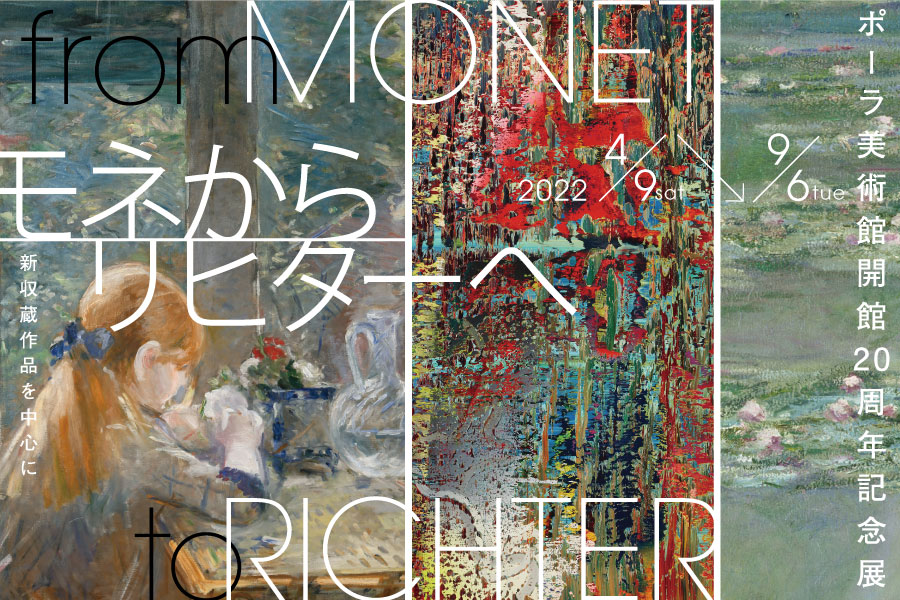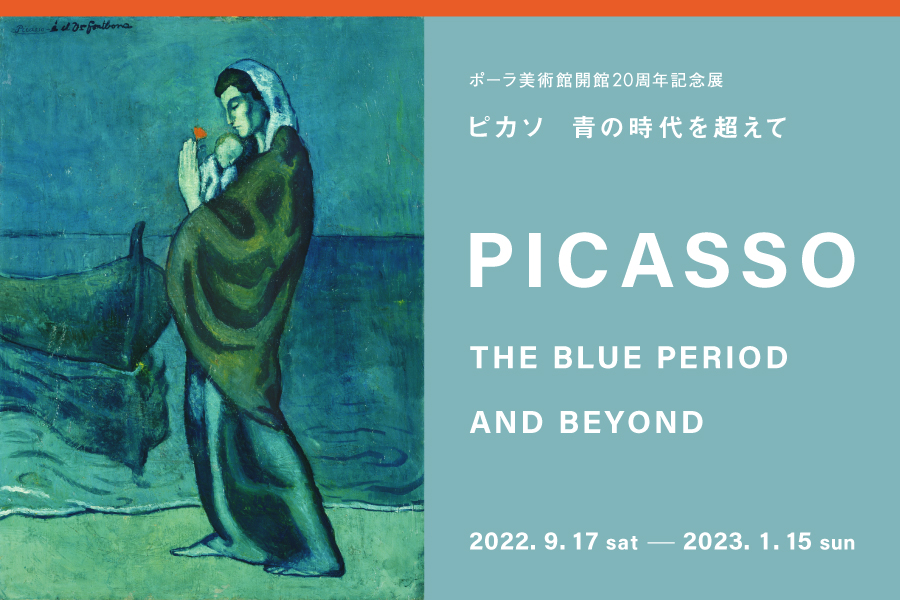-
-
-
Henri Matisse《Promenade des oliviers》1905
-
Henri Matisse《Promenade des oliviers》1905
-
Roni Horn《Air Burial (Hakone)》2017-2018 © Roni Horn © Nagare Satoshi
-
Roni Horn《Air Burial (Hakone)》2017-2018 © Roni Horn © Nagare Satoshi
-
Gerhard Richter《Abstract Painting (649-2)》1987 © Gerhard Richter 2021 (05102021)
-
Gerhard Richter《Abstract Painting (649-2)》1987 © Gerhard Richter 2021 (05102021)
-
Berthe Morisot《On the Veranda》1884
-
Berthe Morisot《On the Veranda》1884
-
Matsumoto Shunsuke《Cityscape》1940
-
Matsumoto Shunsuke《Cityscape》1940
-
-
-
Fernand Léger《Woman at the Mirror》1920
-
Fernand Léger《Woman at the Mirror》1920
-
Vilhelm Hammershøi《Woman Reading in Sunlight, Strandgade 30》1900
-
Vilhelm Hammershøi《Woman Reading in Sunlight, Strandgade 30》1900
-
Claude Monet《Water Lilies》1907
-
Claude Monet《Water Lilies》1907
THE POLA MUSEUM OF ART
FOR DETAILS ON THE POLA MUSEUM OF ART VISION
Vision2032
An Inspirational Museum
Mission Statement
STORIES
Here, we introduce some detailed aspects of the symbiosis between Hakone’s natural beauty and art, including the museum’s outstanding architectural features, and the wondrous environment that adorns the Nature Trail.
20TH ANNIVERSARY EXHIBITIONS
-
From Monet to Richter: Focus on New Acquisitions
 Since opening on September 6, 2002, the Pola Museum of Art has presented a collection of artworks assembled over an approximately 40-year period after the war by Suzuki Tsuneshi (1930-2000), the second-generation head of the Pola Orbis Group. Over the years, these works have served as the basis for a variety of exhibitions. To commemorate the Pola Museum of Art’s tenth anniversary in 2012, the facility expanded its activities by adding a nature trail to the building, installing a number of open-air sculptures, opening a contemporary art gallery, organizing a series of hands-on exhibitions, and establishing a learning program. Moreover, in recent years, the original collection has been supplemented with important works in order to trace the development of art from the 20th century to the present day. This exhibition marks the first time that works from Suzuki Tsuneshi’s collection are being presented alongside the museum’s new acquisitions.
Since opening on September 6, 2002, the Pola Museum of Art has presented a collection of artworks assembled over an approximately 40-year period after the war by Suzuki Tsuneshi (1930-2000), the second-generation head of the Pola Orbis Group. Over the years, these works have served as the basis for a variety of exhibitions. To commemorate the Pola Museum of Art’s tenth anniversary in 2012, the facility expanded its activities by adding a nature trail to the building, installing a number of open-air sculptures, opening a contemporary art gallery, organizing a series of hands-on exhibitions, and establishing a learning program. Moreover, in recent years, the original collection has been supplemented with important works in order to trace the development of art from the 20th century to the present day. This exhibition marks the first time that works from Suzuki Tsuneshi’s collection are being presented alongside the museum’s new acquisitions. -
PICASSO: THE BLUE PERIOD AND BEYOND
 Around the age of 20, Pablo Picasso turned his attention to people who were sad and poverty-stricken, capturing them in paintings made with blue paint, and developing an unparalleled series of portraits. From the Blue Period, the starting point of Picasso’s career, to his Cubist experiments, and on into his mature and later years, the artist remained highly productive and unceasingly ambitious throughout his 91-year life. Today, nearly half a century after his death, Picasso’s paintings continue to exude a powerful living expression. Based on studies conducted with the cooperation of Western museums, this exhibition, a collaborative undertaking between the Pola Museum of Art and the Hiroshima Museum of Art, which boast two of the leading Picasso collections in Japan, examines Picasso’s production process and his lifelong challenges in the art of painting. The exhibition showcases paintings from the two museums’ collections as well as valuable works from both Japanese and foreign institutions in order to trace the creative trajectory of one of the 20th century’s greatest masters through the latest scientific technology and art research.
Around the age of 20, Pablo Picasso turned his attention to people who were sad and poverty-stricken, capturing them in paintings made with blue paint, and developing an unparalleled series of portraits. From the Blue Period, the starting point of Picasso’s career, to his Cubist experiments, and on into his mature and later years, the artist remained highly productive and unceasingly ambitious throughout his 91-year life. Today, nearly half a century after his death, Picasso’s paintings continue to exude a powerful living expression. Based on studies conducted with the cooperation of Western museums, this exhibition, a collaborative undertaking between the Pola Museum of Art and the Hiroshima Museum of Art, which boast two of the leading Picasso collections in Japan, examines Picasso’s production process and his lifelong challenges in the art of painting. The exhibition showcases paintings from the two museums’ collections as well as valuable works from both Japanese and foreign institutions in order to trace the creative trajectory of one of the 20th century’s greatest masters through the latest scientific technology and art research.